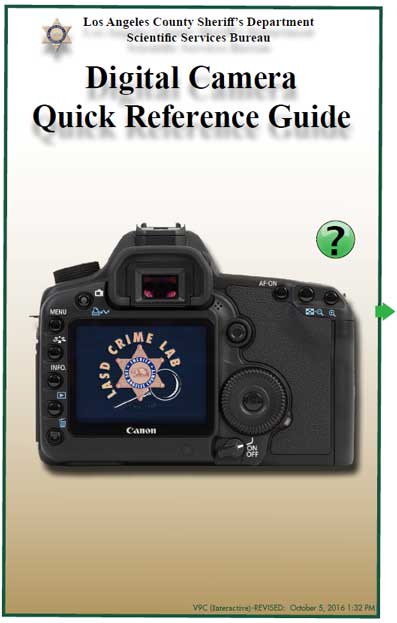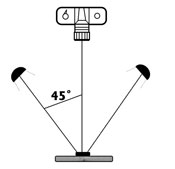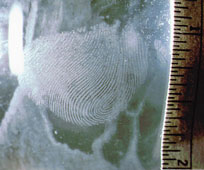|
View in browser: https://www.crime-scene-investigator.net/newsletter/0321.html
|
||
|
MARCH 2021 | ||
| ||
|
This Month's Featured Resource on the Crime Scene Investigator Network Website
|
||

Erika Di Palma, Yvette Gonzalez and Roger W. Vargo This interactive guide covers the following topics:
The Los Angeles Sheriff's Department has made this interactive PDF available free of charge. The PDF may be saved on your smartphone for access at a crime scene. <Read/download the Publication> |
New CSI and Forensic Job Announcements
|
|
|
The most comprehensive listing of Crime Scene Investigation and Forensic To be notified of job openings as they are posted, follow us on Twitter: Job Posting Alerts |
||
|
Crime Scene Technician
Tacoma Police Department, Tacoma, Washington, USA Final Filing Date: March 18, 2021 Detecting, collecting, preserving, packaging, and transporting evidence; Processing for latent fingerprints; Performing forensic photography and producing crime scene diagrams. Crime Scene Technicians also prepare comprehensive written reports and testify in courts of law. <View complete job listing> |
||
|
Forensics Manager
Orlando Police Department, Orlando, Florida, USA Final Filing Date: March 19, 2021 Performs responsible managerial and technical work, overseeing the day to day operations of the Forensics Section to include: crime scene investigators, latent print examiners, forensic imaging, and print lab consisting of forensic video analysts and forensic photographers. <View complete job listing> |
||
|
Forensic Technician
Santa Monica Police Department, Santa Monica, California, USA Final Filing Date: March 25, 2021 Conducts entry-level crime scene investigations. Documents, collects, and preserves physical and biological evidence including fingerprints and DNA. Performs field and laboratory processing of physical evidence collected at crime scenes and performs subsequent chemical processing for the detection of latent fingerprints and DNA. <View complete job listing> |
||
|
Evidence Technician
North Carolina Department of Justice, Greensboro, North Carolina, USA Final Filing Date: March 18, 2021 Evaluating, inventorying, and receiving incoming evidence submissions. Ensuring the proper identification, barcoding, and remediation of items of evidence. Proper storage placement of evidence and record of chain of custody. Delivery and pick up of evidence to/from assigned sections. <View complete job listing> |
||
 |
||
|
Forensic Scientist I, Forensic Biology
North Carolina Department of Justice, Hendersonville, North Carolina, USA Final Filing Date: March 16, 2021 The Forensic Scientist I is an entry level forensic scientist professional that analyzes forensic evidence in a crime laboratory setting. Employees examine and analyze evidence from simple to moderately complex casework for chemical indications of the presence of blood and/or other body fluids and/or perform a DNA typing test to determine the donor of a particular body fluid. <View complete job listing> |
||
|
Forensic Toxicologist or Trainee
Department of Forensic Science, Roanoke, Virginia, USA Final Filing Date: March 29, 2021 The candidate will independently analyze human fluids and tissues in postmortem, DUI/D and other criminal cases using chemical and instrumental methodologies, critically evaluate data, prepare Certificates of Analysis, and interpret and defend results in courts of law. <View complete job listing> |
||
|
Criminalist I - Pattern Evidence
New Hampshire Division of State Police, Forensic Lab Unit, Concord, New Hampshire, USA Final Filing Date: March 17, 2021 Conducts chemical and physical analyses and comparisons on specimens of physical evidence in the Pattern Evidence (e.g., fingerprints, footwear, impressions, tire tracks) unit in connection with criminal investigations, and testifies as an expert in criminal trials. <View complete job listing> |
||
|
Medical Examiner Investigator
Macomb County, Mount Clemens, Michigan, USA Final Filing Date: March 18, 2021 Under direction, performs investigations of deaths that occur within Macomb County; prepares detailed reports and analysis on investigation of cases; ensures that evidence, death scene and specimens are preserved for authenticity in cooperation with local law enforcement activities; <View complete job listing> |
||
|
Search for more job listings in Crime Scene Investigations and Forensics To be notified of job openings as they are posted, follow us on Twitter: Job Posting Alerts |
||
|
Other Resources on the Crime Scene Investigator Network Website
|
||
|
Not Subscribed to this Newsletter?
|
||
|
If you are not subscribed to this newsletter, you may subscribe with this link: SUBSCRIBE via email |
||
|
To Unsubscribe
|
||
|
To unsubscribe from future e-mail alerts, please click here: UNSUBSCRIBE Copyright ©2021 Crime Scene Resources, Inc. Crime Scene Investigator Network |




